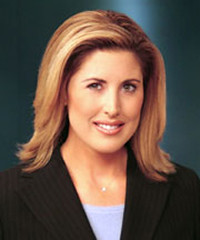“At Progressive, we have a stated set of Core Values that we use to guide our decision making and actions,” says Glenn Renwick, president and CEO of Progressive. “One of these Values is the Golden Rule — treat others as you would like to be treated.”
Given this quote is pulled directly from an ill-advised statement after the The Atlanta Journal-Constitution broke a story about how private investigators working for Progressive tape recorded church sessions, it's hard to believe.
Why were investigators recording church members who confessed about abortions, sexual orientation issues, drug addictions and other dark secrets? It seems the company was hoping to discredit a couple who were in an ongoing lawsuit over a traffic accident. The couple has now filed a lawsuit that charges invasion of privacy, breach of confidentiality, emotional distress, fraud, and other issues.
“For the past 70 years, we've built our business by building trust,” Renwick continues. “Trust that we will do the right thing on behalf of our customers — every day, every time.”
Coincidentally, trust seems be the buzzword behind Progressive’s TripSense, which allows Minnesota drivers to get discounts if they can “prove” that they drive less. Given that simply asking for an odometer reading might work just as effectively, one has to wonder just how "progressive" the definition of trust has become.
“We make sure we always fall well within the law," said James Purgason Jr. and Paige Weeks of Merlin Investigations, the investigators who were contracted by Wisconson-based Progressive Northern Insurance Co. "How it's interpreted from there isn't up to us."
But not all private investigators feel that way. When reporter D.L. Bennett asked Glenn Christian of Coastal Investigations in Savannah, who serves as president of the Georgia Association of Private Investigators, what he thought, Christian said that some companies would never do that. He said there is a fine line between what might be legal and what is moral.
To be fair, it seems Renwick was personally unaware of what Wisconson-based Progressive Northern Insurance Co. was attempting to do to win its case and there seems little to be little doubt that he is appalled. However, he was clearly aware of the statement that now decorates the Progressive Web site. And frankly, he should be appalled that he signed off on it.
There is only one statement that may have not turned into what Collateral Damage calls one of the more obvious definitions of a public relations nightmare. It would have been the one that skips the messages about trust and company history and cuts right to the chase. Something like this...
Upon learning that Progressive Northern Insurance Co. and contracted investigators, Merlin Investigations, breached our company’s values two years ago, Progressive will be settling this case as quickly as possible. (Um, insert a line about restitution for the couple, the church, AND all those other people who were there). As a company, we are appalled and apologize to all those impacted.
To ensure this never happens again and to send a clear message to all of our divisions, we will be releasing all parties who were aware that this investigation was grossly overreaching for evidence. I only wish that the incident would have been brought to my attention two years ago so we could have acted promptly then and protected this couple from tactics that clearly cross the line of ethical and moral decency.
The end. No gratuitous 3-paragraph company cut line required.
Sure, it isn’t perfect, but even this 3-second solution reads as more genuine than the original. Or, in other words, one can only hope Progressive covers “communication ignorance” because this statement reads like a pileup. Once again, it's never the incident as much as the aftermath that gets companies in trouble.

Given this quote is pulled directly from an ill-advised statement after the The Atlanta Journal-Constitution broke a story about how private investigators working for Progressive tape recorded church sessions, it's hard to believe.
Why were investigators recording church members who confessed about abortions, sexual orientation issues, drug addictions and other dark secrets? It seems the company was hoping to discredit a couple who were in an ongoing lawsuit over a traffic accident. The couple has now filed a lawsuit that charges invasion of privacy, breach of confidentiality, emotional distress, fraud, and other issues.
“For the past 70 years, we've built our business by building trust,” Renwick continues. “Trust that we will do the right thing on behalf of our customers — every day, every time.”
Coincidentally, trust seems be the buzzword behind Progressive’s TripSense, which allows Minnesota drivers to get discounts if they can “prove” that they drive less. Given that simply asking for an odometer reading might work just as effectively, one has to wonder just how "progressive" the definition of trust has become.
“We make sure we always fall well within the law," said James Purgason Jr. and Paige Weeks of Merlin Investigations, the investigators who were contracted by Wisconson-based Progressive Northern Insurance Co. "How it's interpreted from there isn't up to us."
But not all private investigators feel that way. When reporter D.L. Bennett asked Glenn Christian of Coastal Investigations in Savannah, who serves as president of the Georgia Association of Private Investigators, what he thought, Christian said that some companies would never do that. He said there is a fine line between what might be legal and what is moral.
To be fair, it seems Renwick was personally unaware of what Wisconson-based Progressive Northern Insurance Co. was attempting to do to win its case and there seems little to be little doubt that he is appalled. However, he was clearly aware of the statement that now decorates the Progressive Web site. And frankly, he should be appalled that he signed off on it.
There is only one statement that may have not turned into what Collateral Damage calls one of the more obvious definitions of a public relations nightmare. It would have been the one that skips the messages about trust and company history and cuts right to the chase. Something like this...
Upon learning that Progressive Northern Insurance Co. and contracted investigators, Merlin Investigations, breached our company’s values two years ago, Progressive will be settling this case as quickly as possible. (Um, insert a line about restitution for the couple, the church, AND all those other people who were there). As a company, we are appalled and apologize to all those impacted.
To ensure this never happens again and to send a clear message to all of our divisions, we will be releasing all parties who were aware that this investigation was grossly overreaching for evidence. I only wish that the incident would have been brought to my attention two years ago so we could have acted promptly then and protected this couple from tactics that clearly cross the line of ethical and moral decency.
The end. No gratuitous 3-paragraph company cut line required.
Sure, it isn’t perfect, but even this 3-second solution reads as more genuine than the original. Or, in other words, one can only hope Progressive covers “communication ignorance” because this statement reads like a pileup. Once again, it's never the incident as much as the aftermath that gets companies in trouble.















